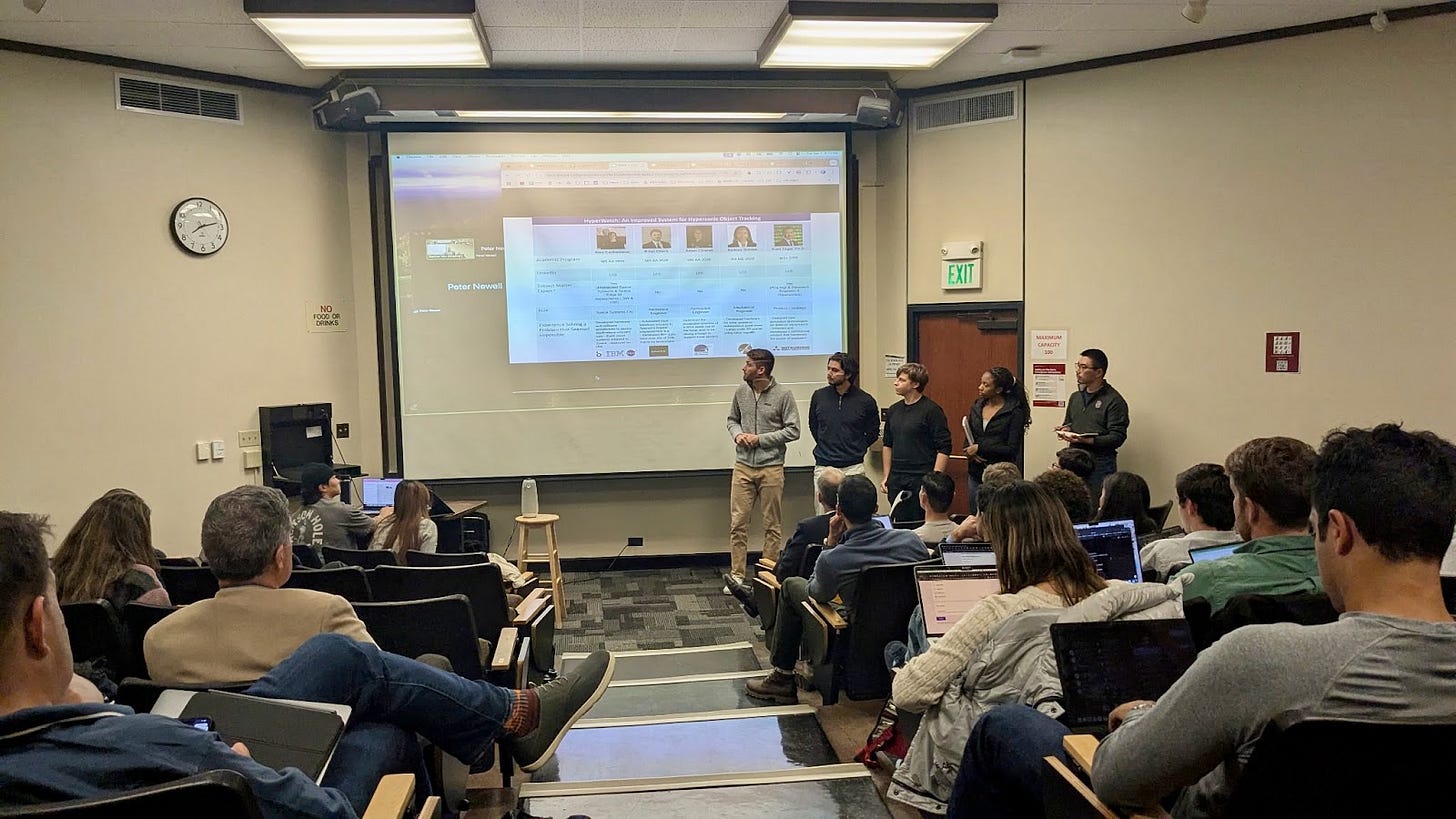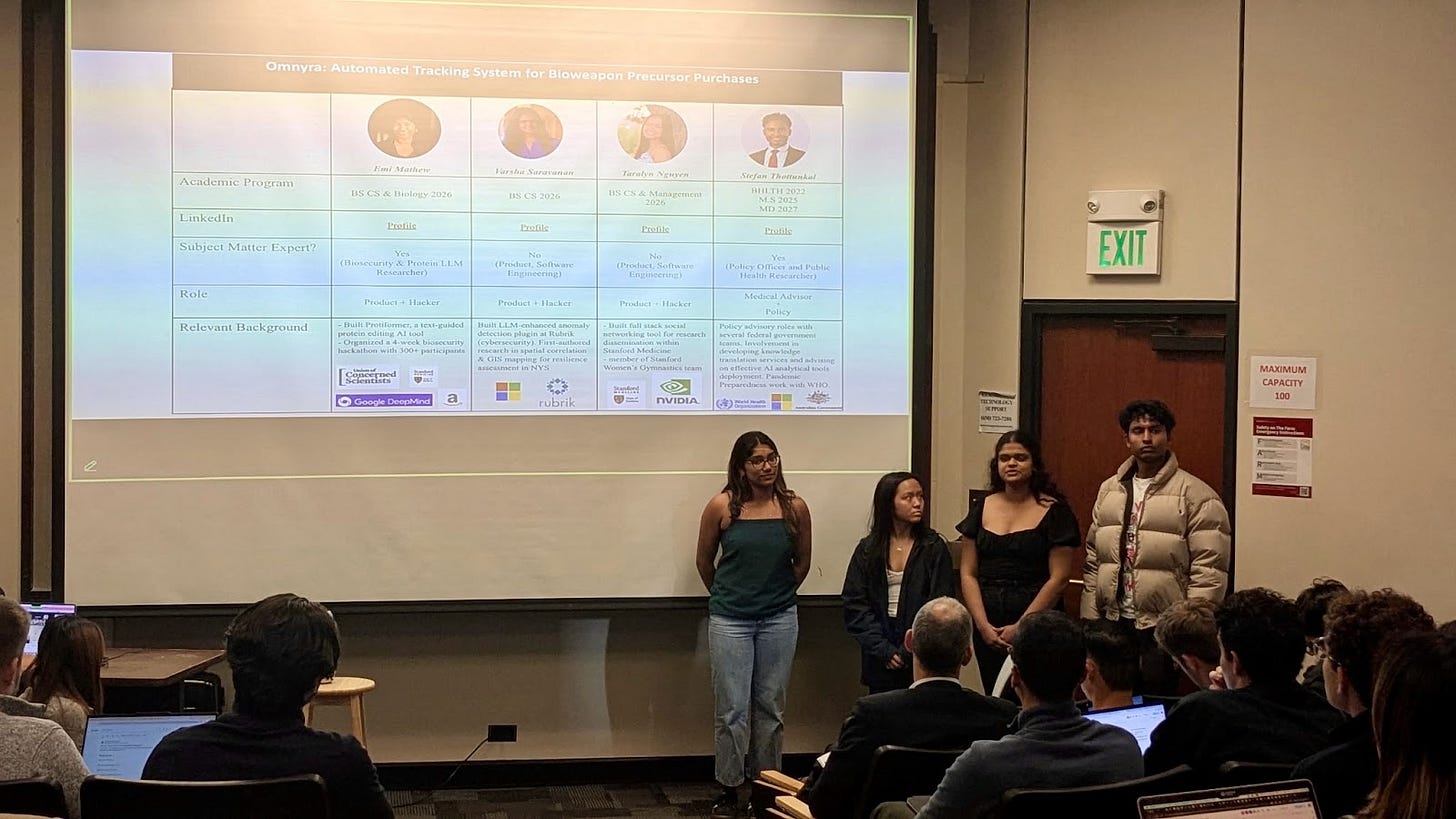H4D: Stanford University H4D Class Celebrating 10 Years of Solving the Nation’s Toughest National Security Problems
2025 Cohort Tackling Today’s Challenges with Satellites, Space Manufacturing, Pathogens, Microchips, Minerals, Submarines and More
The Hacking for Defense® (H4D) course was founded ten years ago by Steve Blank, a Silicon Valley entrepreneur and lean startup pioneer, and founding member at the Gordian Knot Center for National Security Innovation at Stanford University, as well as an adjunct professor at Stanford and senior fellow for Innovation at Columbia University; Joe Felter, a retired U.S. Army Special Forces officer, US deputy assistant secretary of Defense for South and Southeast Asia, and co-founder and center director at the Gordian Knot Center for National Security Innovation at Stanford University; and Col. Peter Newell (Ret.), a retired Army colonel and innovation leader at the Pentagon, now CEO of the innovation company BMNT. The trio aimed to bring together Silicon Valley’s innovation mindset to national security challenges by connecting students with real-world problems from the Department of Defense and other government agencies. Today, H4D is taught at 70 colleges and universities around the world, has created more than 70 startups that have generated 660 jobs and raised more than $350 million. So this spring quarter at Stanford is an exciting time to reflect back on the past ten years and look forward to a new set of challenges to tackle and create innovative solutions that help our country.
This year’s Stanford University cohorts make up eight teams of motivated, enthusiastic critical thinking students who are poised to tackle some of our nation’s most complex national security challenges. Tuesday was the first class of the spring term and it was energizing to see the teams excited and ready to jump into their challenges.
Throughout the course term, students will work hands-on with their problem sponsors and defense and industry mentors, applying Lean Startup principles to rapidly iterate solutions with high potential for impact. This term’s class includes diverse, high-stakes problems that reflect the evolving needs of the modern battlefield and beyond. Here's a look at what our teams will be working on:
Army-467: Resilient and Flexible Satellite Communications as a Strategic Imperative
Sponsor: U.S. Army
Challenge: Army satellite operators are working to ensure real-time command and control in complex environments. However, current battlefield communications rely heavily on legacy hardware-locked satellite systems that are vulnerable to jamming and disruption. This team will explore new concepts to build a more flexible and resilient satellite architecture for future conflict scenarios.
CENTCOM-3: CENTCOM’s Vehicle Repair Reboot
Sponsor: U.S. Central Command (CENTCOM)
Challenge: Vehicle technicians in the CENTCOM region struggle with cumbersome technical manuals and a lack of mentorship during critical maintenance tasks. This problem seeks novel approaches to improve on-the-job training, streamline repair workflows, and empower technicians operating in high-tempo, resource-limited environments.
Manufacturing in Space
Sponsor: Defense Innovation Unit (DIU)
Challenge: As the U.S. expands its space-based operations, space and ground operators face major hurdles in retrieving materials manufactured in orbit. Harsh re-entry environments and high costs raise questions about the long-term viability of in-space manufacturing. The student team will explore safe, cost-effective solutions to return materials to Earth.
IC-10: Pathogen Supply Chain
Sponsor: Federal Bureau of Investigation (FBI)
Challenge: FBI Weapons of Mass Destruction Coordinators are working to prevent the misuse of synthetic biology, but current systems offer limited oversight of DNA synthesis purchases. This team will investigate how to improve tracking and verification processes to help biotech companies and law enforcement prevent biological threats.
IQT-2: To Win the Tech War
Sponsor: In-Q-Tel
Challenge: The U.S. defense acquisition system is hamstrung by the global microchip shortage, driven in part by China’s control over critical mineral supply chains. This team will explore how to reduce risk and accelerate delivery of essential defense technologies by addressing supply chain bottlenecks and mineral dependencies.
IQT-2B: Incentivizing Purchases of U.S. Critical Minerals (Demand-Side)
Sponsor: In-Q-Tel
Challenge: Despite national interest in strengthening domestic critical mineral supply chains, manufacturers still opt for cheaper, foreign-controlled alternatives. This team will work on designing effective incentives and market mechanisms to increase demand for U.S.-sourced critical minerals, especially among chipmakers, defense contractors and EV battery producers.
Navy-177: Sink Smarter, Not Harder
Sponsor: U.S. Navy
Challenge: Submarine operators are facing constraints in inventory and operational flexibility with the current MK 48 ADCAP torpedo. This team is charged with helping the Navy envision and prototype a new, cost-effective torpedo system that could be launched from a variety of platforms—enhancing agility and readiness in undersea warfare.
NGA-28: Swift Routes, Swift Aid
Sponsor: National Geospatial-Intelligence Agency (NGA)
Challenge: In fast-changing conflict zones, like Ukraine, NGA intelligence analysts are working overtime to identify critical infrastructure routes for evacuation and logistics—but manual verification processes are slow and resource-intensive. This team will examine ways to speed up analysis and improve real-time decision-making for on-the-ground operations.
Each of these mission-driven problems represents a unique opportunity for Stanford’s students to step into the world of defense innovation and create real-world impact. We’re thrilled to see what this class will discover, design, and deliver in the weeks ahead.
Stay tuned for updates as our teams hit the ground running!
The Hacking for Defense (H4D) program is taught at 70 colleges and universities around the world and has created 70+ startups that have generated 660 jobs and raised more than $350 million. To learn more about the H4D course at Stanford University visit h4d.stanford.edu; to learn more about H4D around the world visit h4d.us. To learn more about The Hacking for Defense® Manual by Jeff Decker, PhD, visit Amazon.






